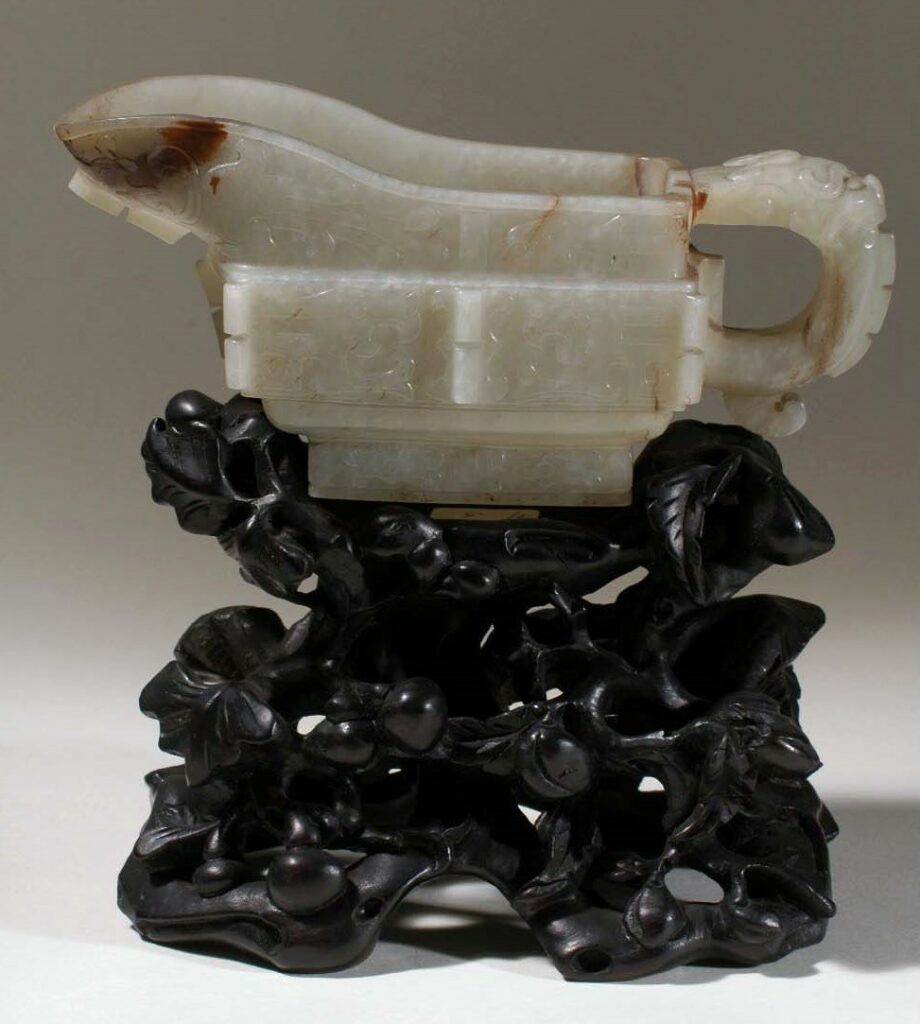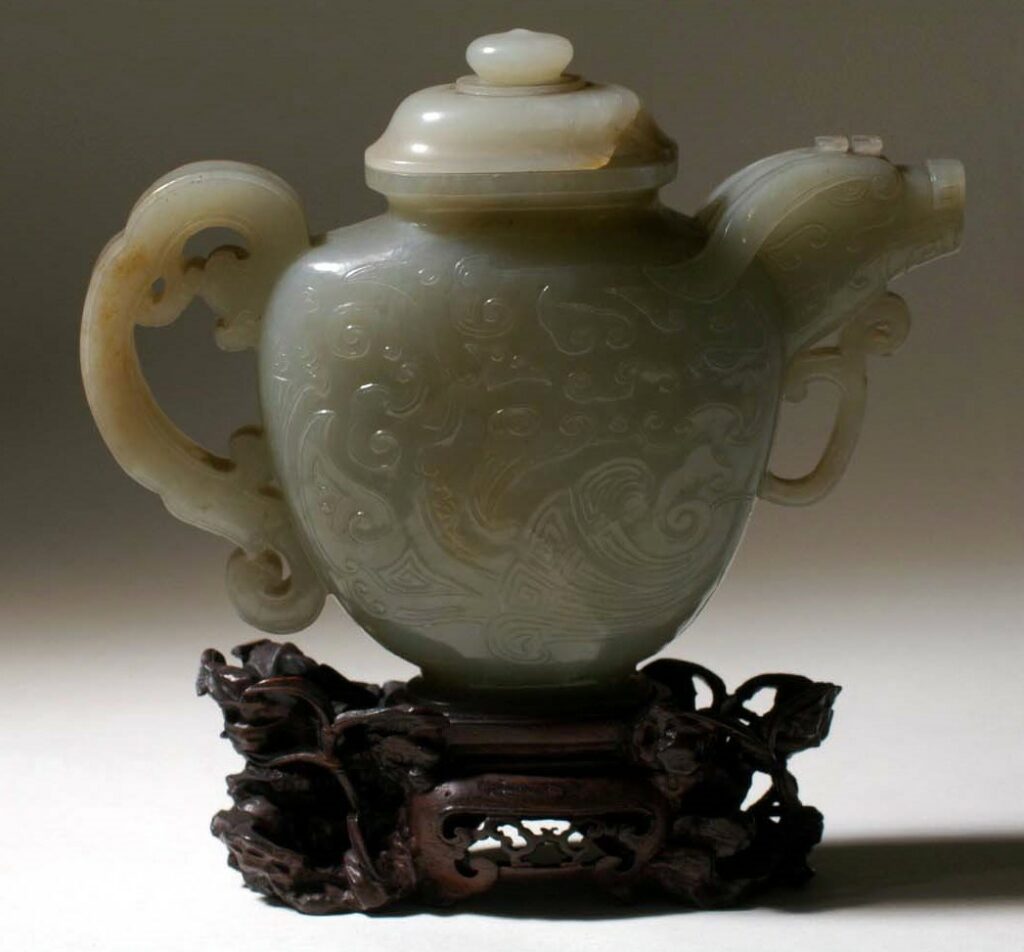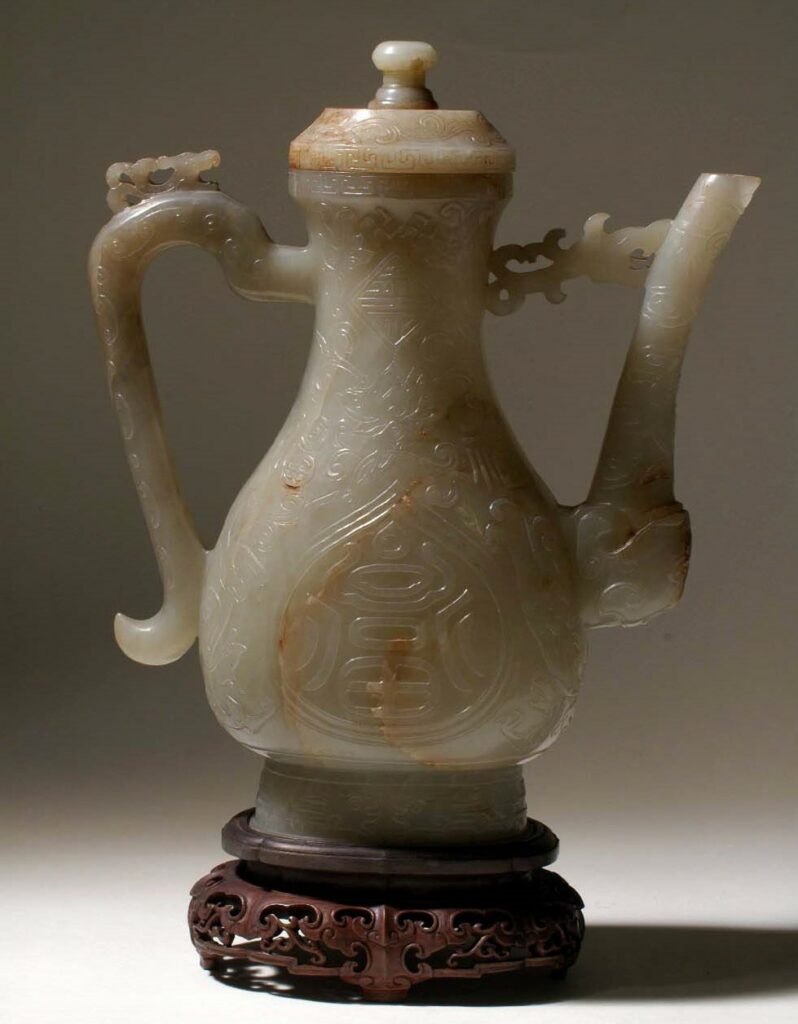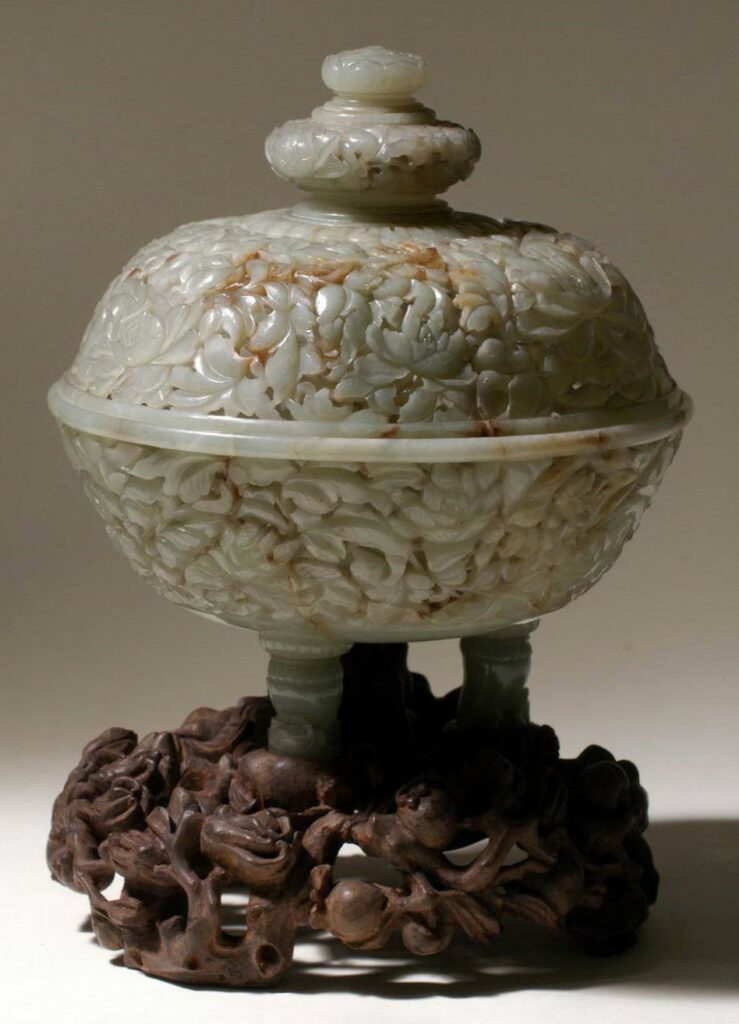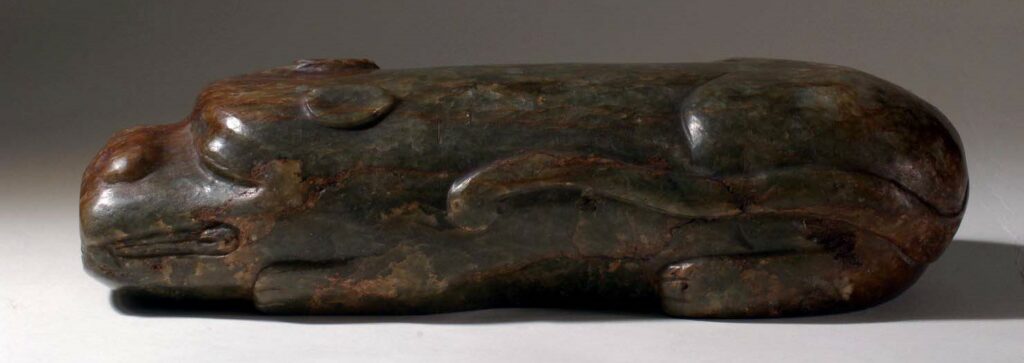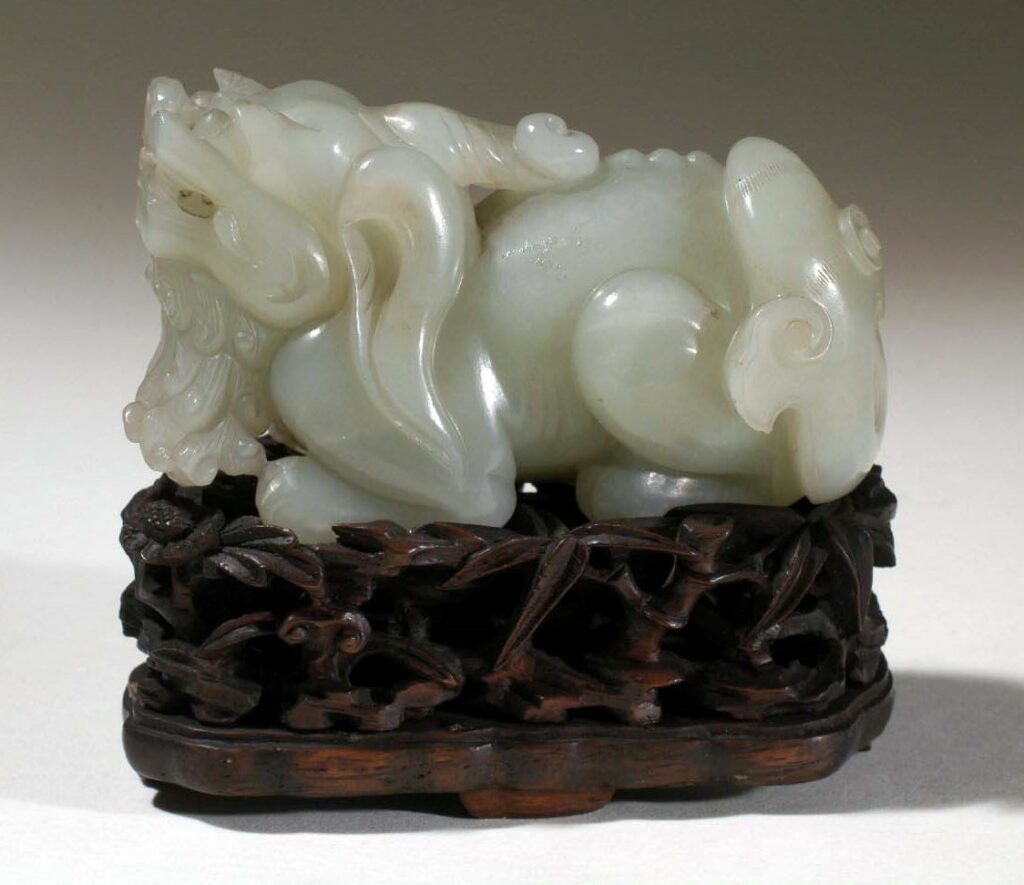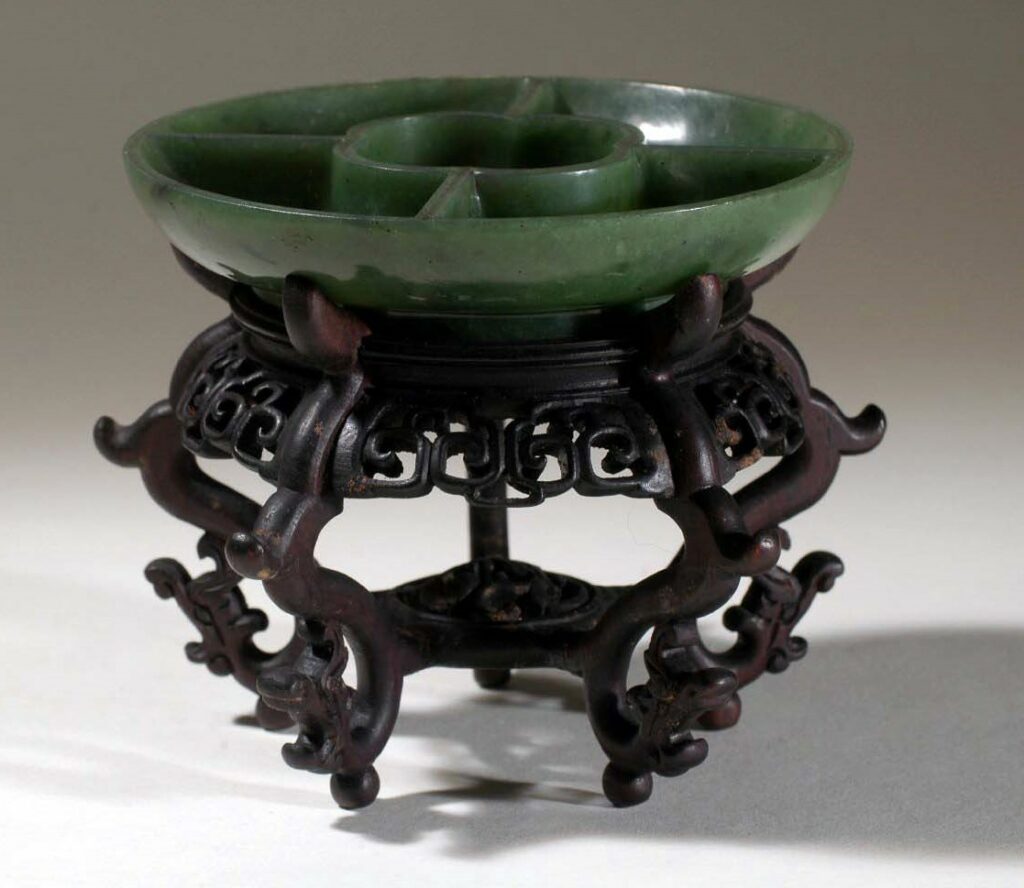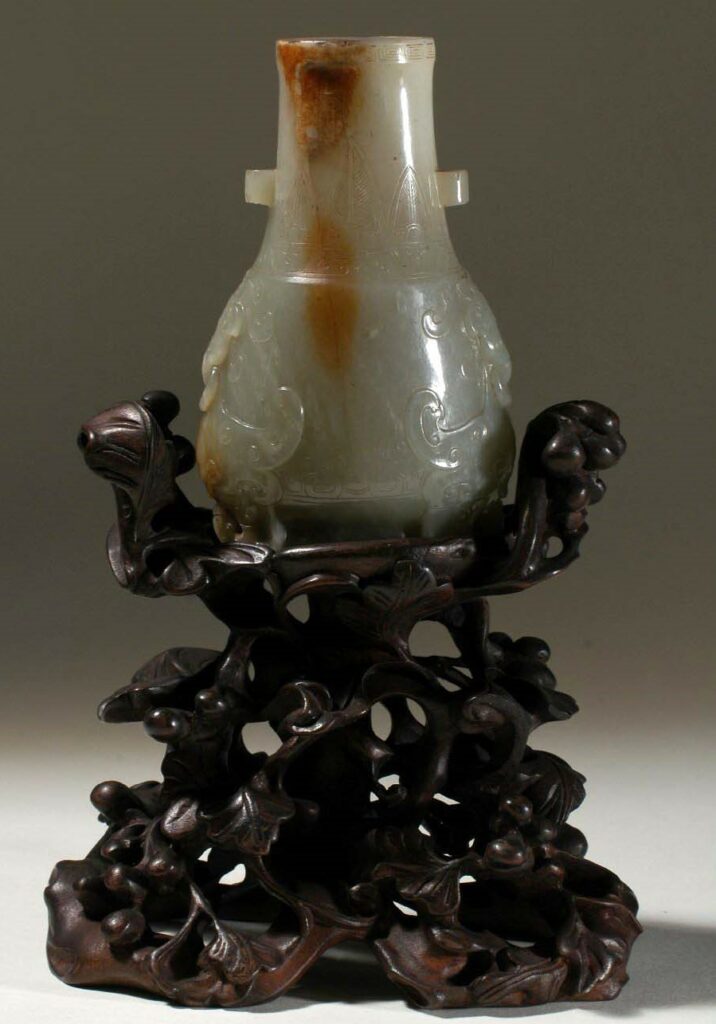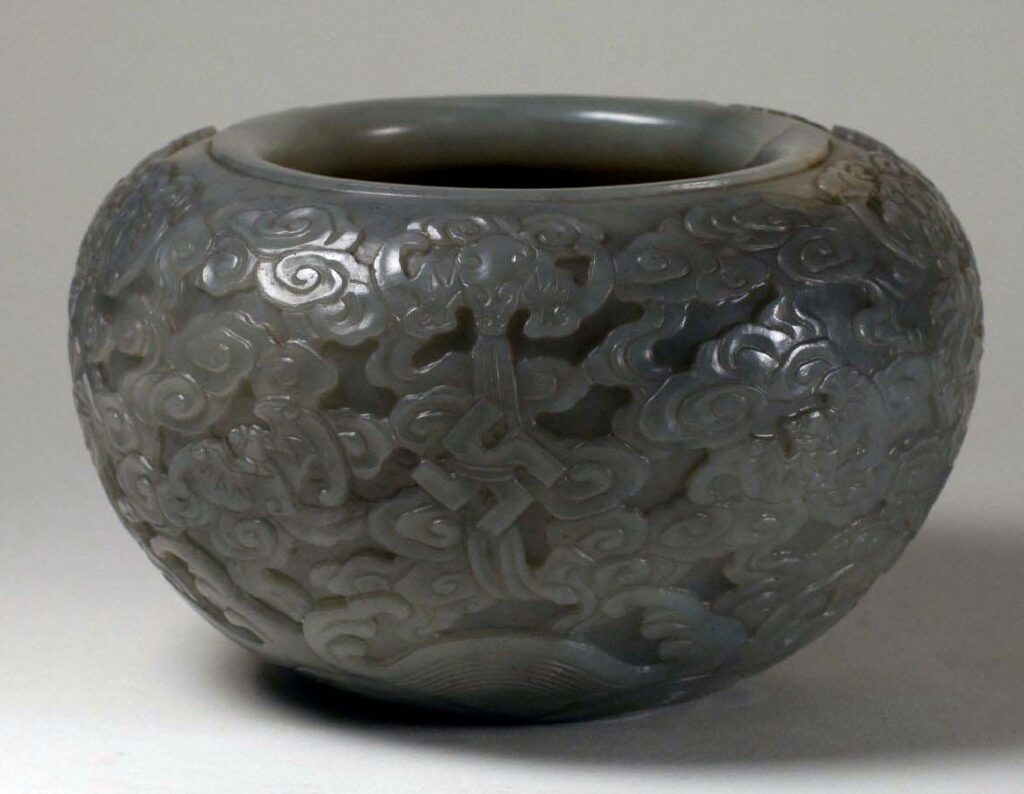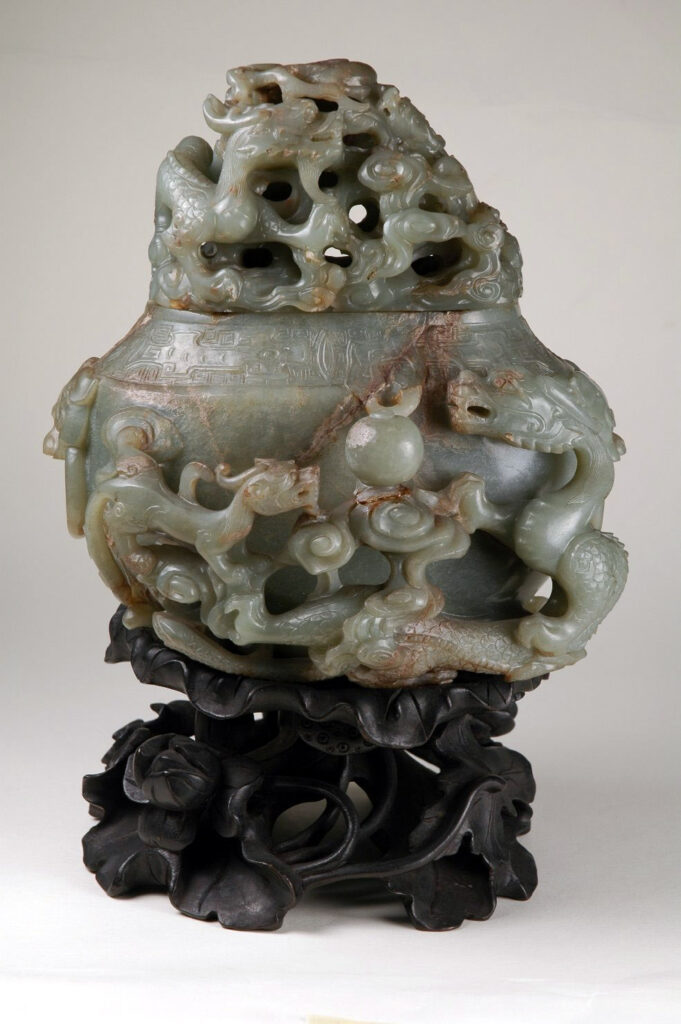JADES
The Museum exhibits some superb examples of Chinese jades from Qing period (1644-1911).
The jade was appreciated in China for its hardness, translucence, its colors and its soft tactile qualities. It was used to create precious objects. The mysterious mystical aura, that surrounded jade since Neolithic, could be traced back to the difficult processing: because its hardness, the jade cannot be carved and engraved. It is grounds and polished with drills, using sand or other abrasives mixed with water. The old grinding process, using a foot treadle to turn the drill, was extremely laborious, one piece taking months or even years to be completed.
The Qianlong jades, while lighter and more decorative than the sober works of the Ming (1368-1644), reach a high point of elegance and creative invention. The artists took motifs from all periods and combined them in graceful sculptures in archaistic style.

